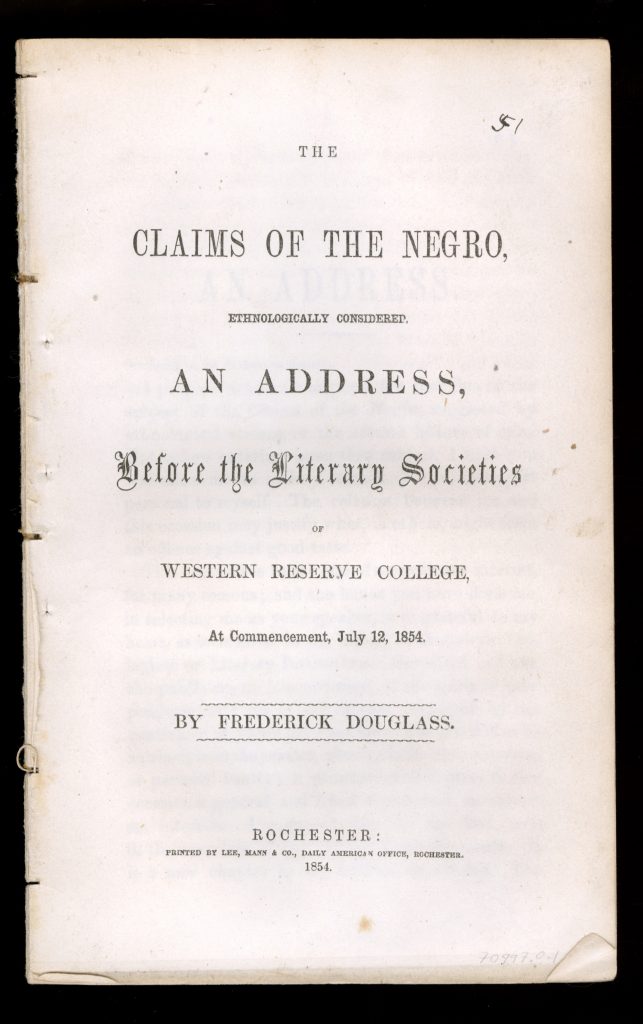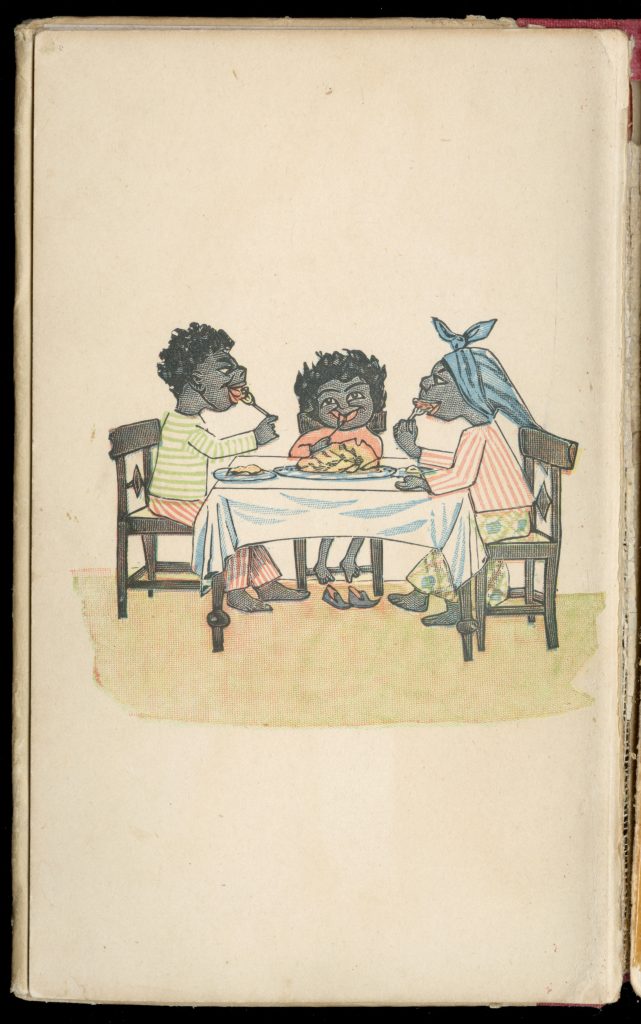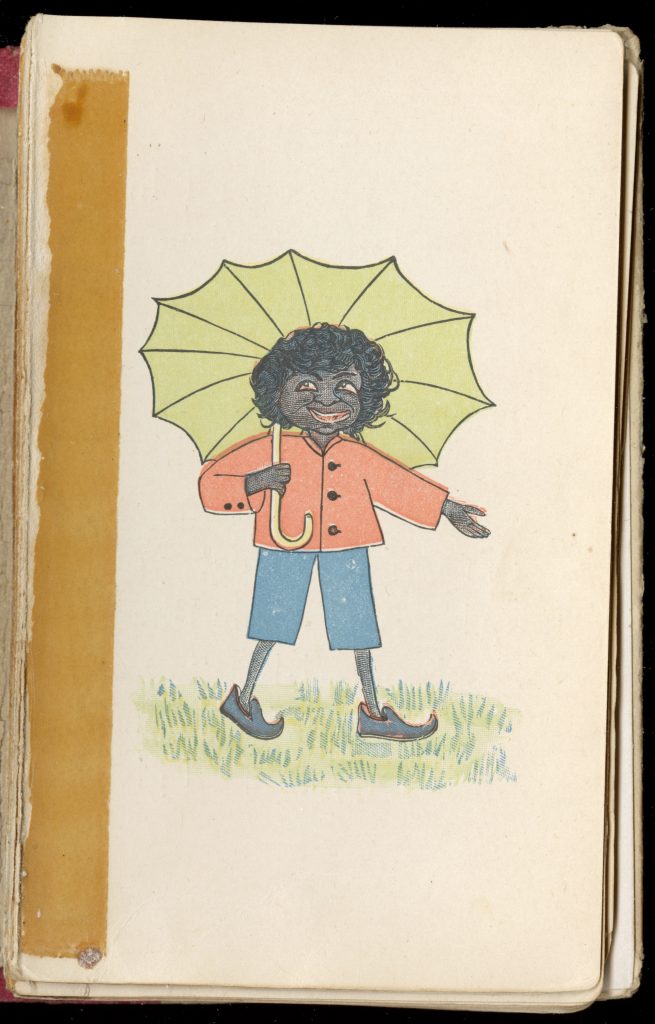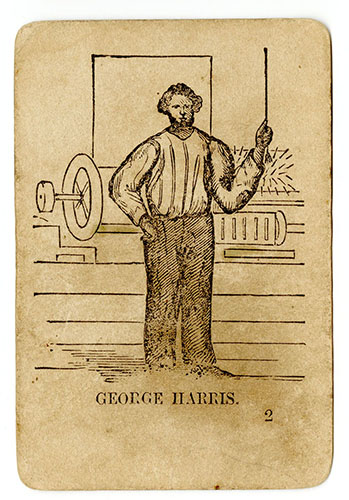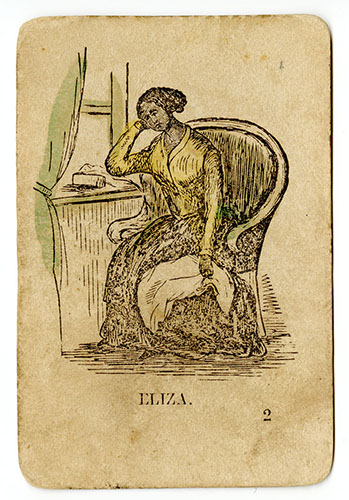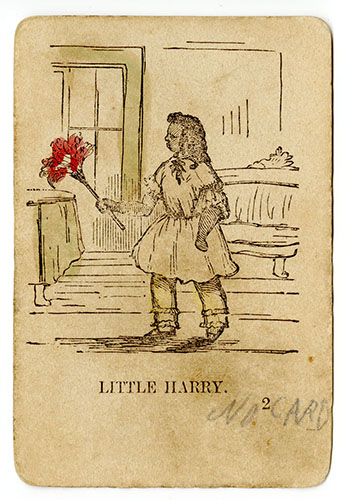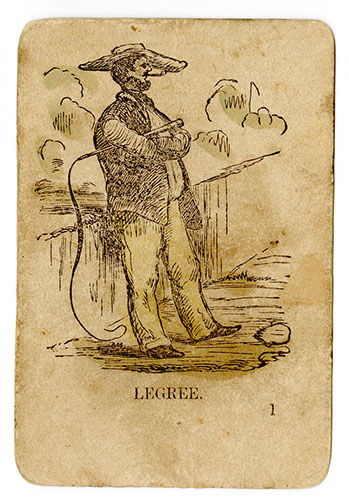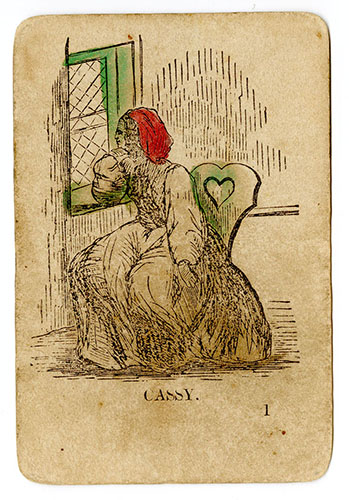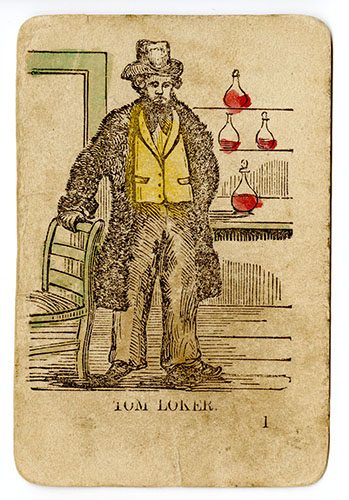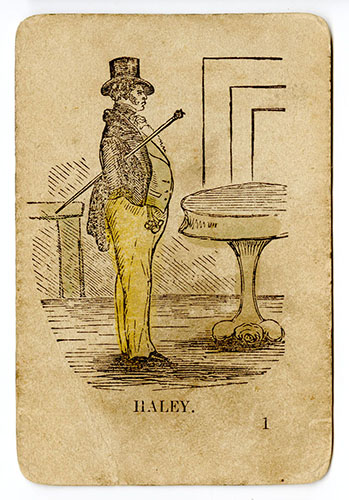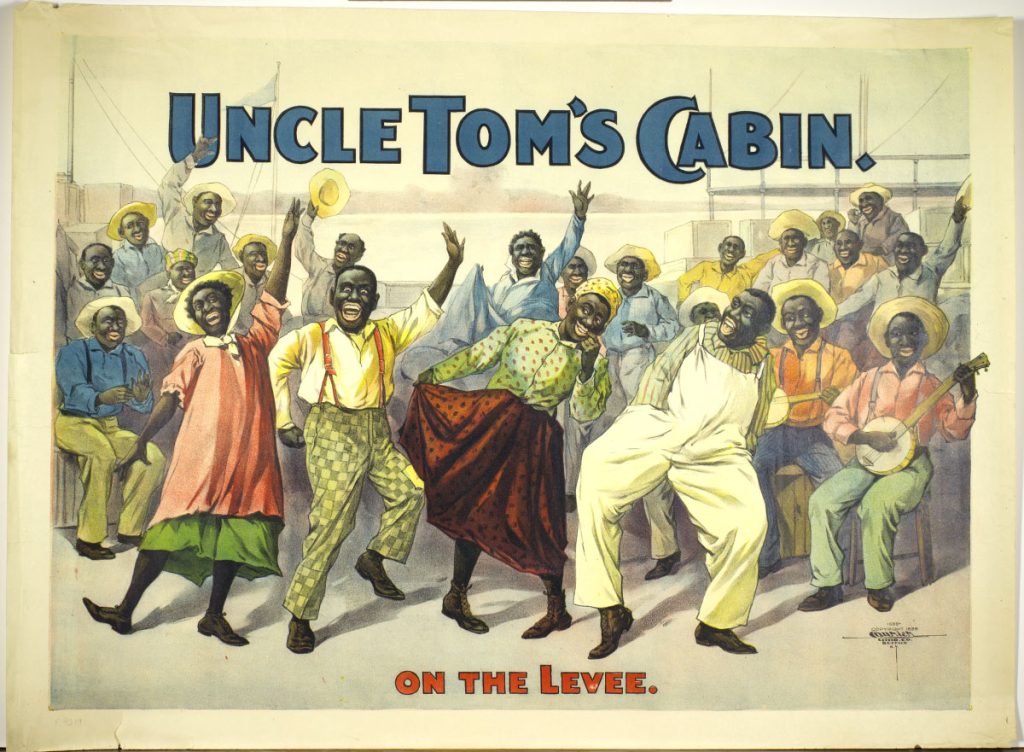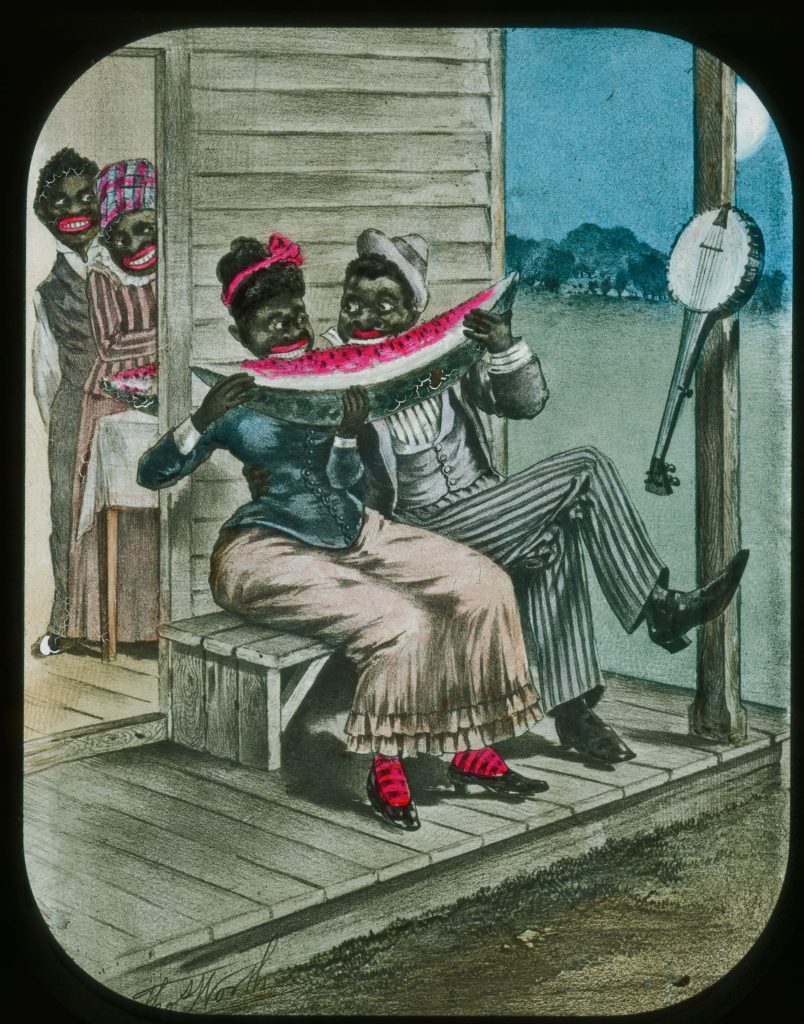How We Were Seen
For centuries, racial stereotypes of Black people played a significant role in American society and influenced the perception of people from the African diaspora. Racial stereotypes were in the political, social, and economic interest of white America. Often, slaveholding white people used racist stereotypes to defend slavery. If Black people were portrayed as faithful, happy, submissive, and content, slavery could be rationalized in the popular white imagination. In today’s society, racial stereotypes have shifted with the progression of systemic racism. This section explores popular historical racial stereotypes of African Americans during the 19th century.
Frederick Douglass, The Claims of the Negro, Ethnologically Considered. An Address, Before the Literary Societies of Western Reserve College, at Commencement, July 12, 1854 (Rochester, 1854).
LCP 70997.O.1
In this speech, Frederick Douglass explores representations of Black and white appearance. Europeans are invariably presented in the highest type while Black people are presented in the lowest type. He states, “the European face is drawn in harmony with the highest idea of beauty, dignity and intellect. Features regular and brown after the Websterian mold. The negro, on the other hand, appears with features distorted, lips exaggerated, forehead depressed—and the whole expression of the countenance made to harmonize the popular idea of negro imbecility and degradation.” These descriptions are similar to most stereotypes of African Americans in the 19th century, such as those listed below.
Bernhard Hall, [Double-sided proof print containing a racist caricature with a mammy and a comic genre scene with a bookmaker] (Philadelphia, 1902). Chromolithograph.
LCP P.2007.23.8
For white racist families, Mammy embodied the ideal loyal servant. Mammy caricatures were typically characterized as obese, older, dark-skinned, and smiling. They were rarely seen with their families but always depicted as part of the white family.
Depicted is a rare racist caricature graphic of a Mammy with her three children outside of a home.
Helen Bannerman. The Story of Little Black Sambo (New York, 1900?). Gift of Louise Kelly.
LCP 119399.D (Kelly)
Sambo was a slur used to degrade Black Americans during slavery and the Jim Crow era. In America, Sambo represented a Black servant who was loyal and contented. The Sambo caricature was popular in music, literature, children’s books, and games.
The Story of Little Black Sambo is about a boy who encounters four hungry tigers. In order to survive, he gives the tigers his colorful clothing and an umbrella. Although set in India, the imagery resembles racist depictions of Black Americans, portraying Black people as uncivilized. It gained a negative reputation by American Civil Rights activists in the 20th century due to its racial slur and images. Eventually, editors like HarperCollins reissued the book with a new title: The Story of Little Babji by Michael di Capua. It included new illustrations and character names.
[Game of Uncle Tom and Little Eva] (Providence, R.I.: V.S.W. Parkhurst, 1852). Hand-colored wood engravings.
LCP albums [120462.D]
Uncle Tom’s Cabin is an anti-slavery novel written by Harriet Beecher Stowe that earned worldwide recognition for its imagery and storyline. It sold over 300,000 copies in its first year of publication and was translated into more than 30 languages, making it the best-selling novel of its time. The story tells the journey of Uncle Tom, a religious enslaved Black man who maintains his integrity despite the cruelties he endures from various masters. Uncle Tom’s character heavily influenced visual and literary culture. Here’s a matching memory card game inspired by the novel.
Uncle Tom’s Cabin. On the Levee (New York, 1899). Chromolithograph.
LCP [P.9219]
After the defeat of the Confederacy in the Civil War, racist minstrel shows and unauthorized reproductions transformed Uncle Tom into a token for slavery apologists. Like the Mammy caricature, Uncle Tom is stereotypically depicted as a dark-skinned, smiling, and obedient worker who is eager to please his master. He is typically a field worker, cook, or butler.
This advertisement for what appears to be a minstrel production of Uncle Tom’s Cabin is one such example. The image depicts multiple stereotypes, including cheerful enslaved people with exaggerated facial features wearing straw hats, kerchiefs, and calico clothing while playing banjos and having a hoedown on a levee.
Two Souls with but a Single Thought (United States, 1890). Lantern, hand-colored in wood mount. Gift of Edna Andrade.
LCP [P.9471]
Many Southern African Americans sold watermelons after Emancipation as a form of economic freedom. Southern white people, threatened by Black economic independence and success, retaliated by equating the watermelon as a sign of Black people’s undignified status for citizenship.
This caricature image depicts a young Black couple eating a piece of watermelon on a porch as the parents of one of the couples watches them from a doorway with more watermelon in hand.
